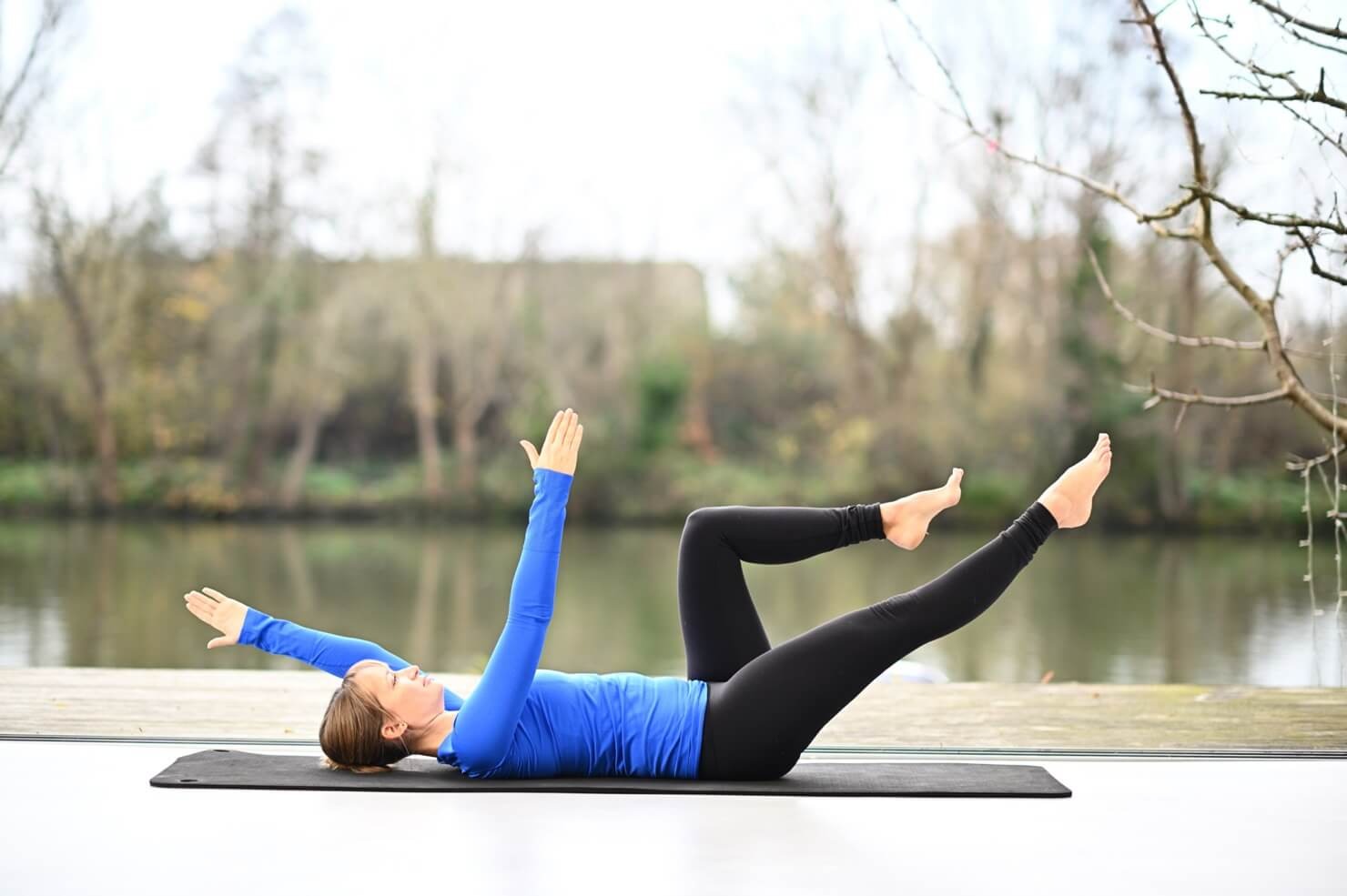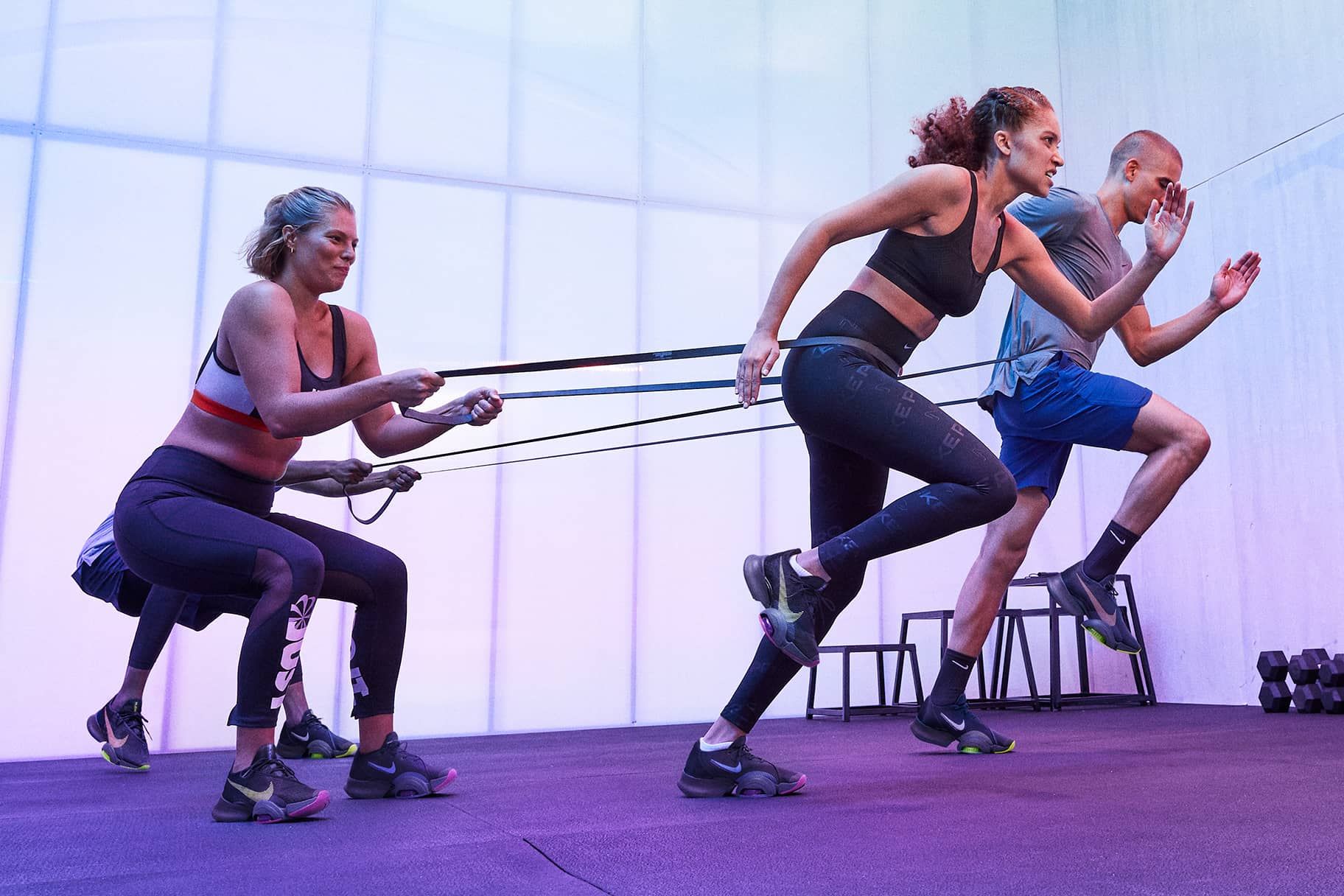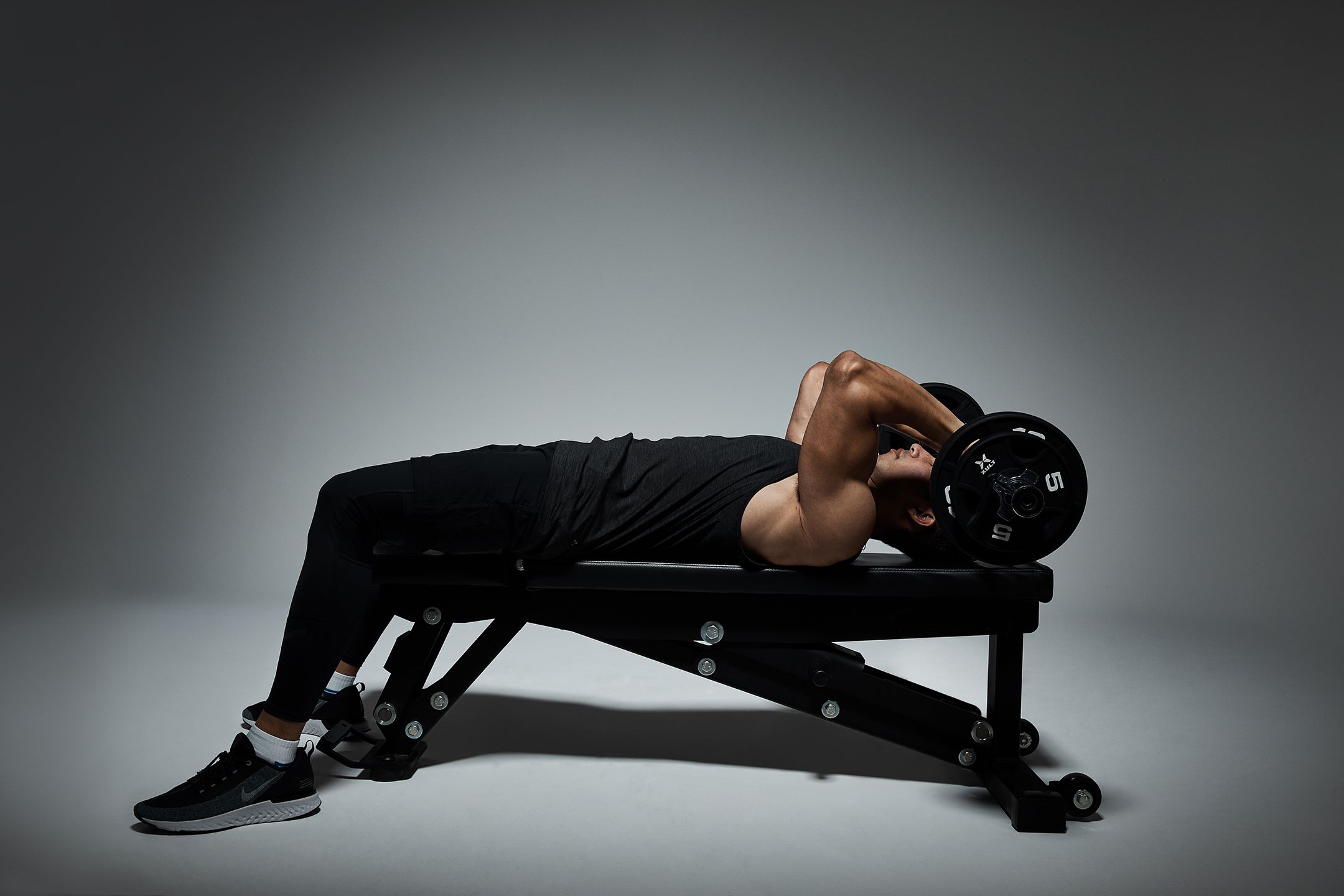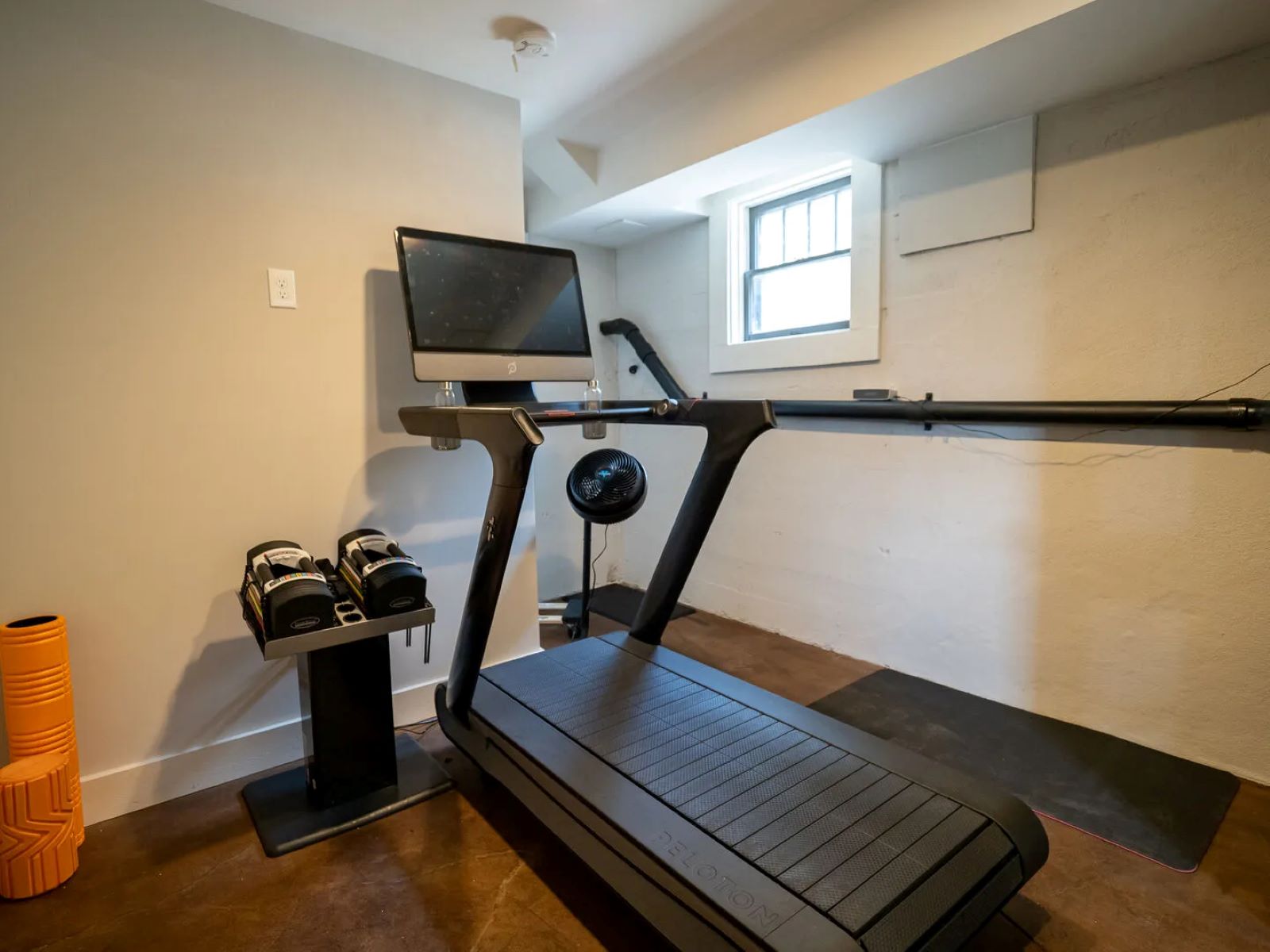

Featured
How Often Should You Workout Your Arms
Modified: August 19, 2023
Discover the featured guide on how often you should workout your arms. Optimize your fitness routine and achieve stronger, toned arms with expert tips and recommendations.
Introduction
When it comes to building impressive arm muscles, it’s essential to strike a balance between challenging your muscles enough to promote growth, while also allowing them enough time to recover. Many people often wonder how often they should work out their arms to achieve optimal results. The frequency of arm workouts depends on several factors, including fitness level, goals, and recovery ability.
Building well-defined and strong arms requires consistent effort and dedication. It’s not just about how often you work out your arms but also how effectively you train them. By understanding the factors that influence arm workout frequency and tailoring your approach accordingly, you can maximize your results and avoid overtraining or undertraining.
In this article, we will explore the factors to consider when determining how often you should work out your arms. We’ll also provide guidelines for different fitness levels, from beginners to advanced lifters, and discuss the importance of listening to your body.
Factors to Consider
Before deciding on the frequency of your arm workouts, it’s important to consider several key factors:
- Training Experience: Your level of experience with weightlifting plays a crucial role in determining how often you should work out your arms. Beginners often need more time to recover between sessions, while advanced lifters may require more frequent training to continue making progress.
- Goals: Your specific goals will also influence your arm workout frequency. If you’re primarily focused on building muscle mass, you might need to train your arms more frequently. However, if your goal is to improve strength or maintain your current arm size, you may need fewer workouts.
- Overall Training Volume: Consider the total volume of your workouts. If you’re already training other muscle groups heavily, you may need to reduce the frequency of your arm workouts to ensure adequate recovery.
- Recovery Ability: Each person’s ability to recover from workouts varies. Factors such as age, sleep patterns, nutrition, and stress levels all impact recovery ability. Understanding your own recovery capabilities will help you determine the appropriate frequency for your arm workouts.
- Progressive Overload: Progressive overload is crucial for muscle growth. If you consistently increase the weight or reps in your arm exercises, you may need more time for recovery between workouts.
By taking these factors into account, you can develop a personalized approach to arm workout frequency that aligns with your goals and capabilities. Remember, it’s essential to strike a balance between challenging your muscles and providing them with enough recovery time for optimal results.
Frequency for Beginners
For individuals who are new to weightlifting or have just started incorporating arm workouts into their routine, it is recommended to begin with a moderate frequency. This allows your body to adapt to the new exercises and build a foundation of strength.
As a beginner, aim to train your arms two to three times per week, with at least one day of rest between each session. This frequency allows for sufficient stimulus to initiate muscle growth while allowing for proper recovery.
During each arm workout, focus on compound exercises that target multiple muscle groups, such as bicep curls, tricep dips, and push-ups. Incorporating these exercises into your routine will provide a well-rounded workout that engages different muscle fibers in your arms.
As you progress and begin to feel more comfortable with arm training, you can gradually increase the frequency to three or four times a week, if desired. However, be cautious not to exceed your body’s capacity to recover. Pay attention to any signs of overtraining, such as persistent muscle soreness, decreased performance, or increased fatigue.
Remember, consistency is key when it comes to building strength and muscle. Focus on proper form and gradually increase the intensity and volume of your workouts over time. By gradually increasing your arm workout frequency, you can give your body ample time to adapt and progress in a safe and effective manner.
Frequency for Intermediate Lifters
For individuals who have been consistently strength training and have developed a solid foundation of strength and muscle, intermediate lifters can increase the frequency of their arm workouts to continue making progress.
As an intermediate lifter, aim to train your arms three to four times per week. This increased frequency allows for greater stimulation of the muscles and continued muscle growth.
One effective approach for intermediate lifters is to follow a split routine, where you focus on different muscle groups on different days. For example, you can dedicate one or two days solely to arm training, allowing for a more targeted and intense workout.
During each arm workout, incorporate a combination of compound exercises and isolation exercises to effectively target different muscles in your arms. Compound exercises like chin-ups, close grip bench presses, and skull crushers engage multiple muscle groups, while isolation exercises like hammer curls and cable pushdowns isolate specific muscles for more precise targeting.
Be mindful of your recovery abilities as you increase the frequency of your arm workouts. Ensure that you are prioritizing proper nutrition, sleep, and rest days to allow for adequate muscle repair and growth.
If you find that your recovery ability is not keeping up with the increased frequency, it’s important to listen to your body and adjust accordingly. You might need to reduce your arm training frequency back to three times per week or incorporate active recovery exercises on rest days to promote blood flow and assist in recovery.
Additionally, remember to continually challenge your muscles by gradually increasing the intensity and volume of your workouts. By incorporating progressive overload techniques such as increasing weights, reps, or sets, you can continue to see improvements in strength, muscle size, and overall arm definition.
Overall, as an intermediate lifter, increasing the frequency of your arm workouts and incorporating a well-rounded mix of compound and isolation exercises will help you continue to progress and achieve your desired results.
Frequency for Advanced Lifters
Advanced lifters, who have been consistently training for a significant amount of time and have reached a high level of strength and muscle development, can further increase the frequency of their arm workouts to continue challenging their muscles and promoting growth.
As an advanced lifter, it is recommended to train your arms four to five times per week. This higher frequency allows for greater muscle stimulation and increased muscle hypertrophy.
When planning your arm workouts, consider implementing a combination of different training protocols, such as heavy lifting, high-volume training, and supersets. This variety in training methods helps to continuously challenge your muscles and prevent plateauing.
Divide your arm workouts into specific training days, focusing on different areas of the arms. For example, you can dedicate one day to biceps, one day to triceps, and another day to forearm and grip training. This targeted approach allows for maximum intensity and specialization in each muscle group.
Advanced lifters can also incorporate advanced training techniques, such as drop sets, rest-pause sets, and eccentric training, to further push their muscles to the limit. These techniques place greater stress on the muscles, leading to increased muscle fiber recruitment and growth.
Ensure that you are giving your muscles enough time to recover by prioritizing proper nutrition, hydration, and rest. Adequate recovery between intense workouts is essential for avoiding overtraining and maximizing muscle growth.
Pay attention to your body’s response to the increased frequency of arm workouts. If you start experiencing signs of overtraining, such as excessive fatigue, decreased performance, or a decrease in muscle size, it might be necessary to decrease the frequency or incorporate more rest days into your training routine.
Advancement in arm training for advanced lifters involves finding the right balance between volume, intensity, and recovery. By continuously challenging your muscles with progressive overload and incorporating strategic variations in training, you can continue to see improvements in arm strength, size, and definition.
Balancing Arm Workouts
While it’s important to determine the frequency of your arm workouts, it’s equally crucial to establish a balance within each session. Balancing your arm workouts involves targeting all the major muscles in your arms, including the biceps, triceps, forearms, and shoulders, to achieve optimal muscle development and proportionality.
When designing your arm workouts, focus on incorporating exercises that target both the pushing and pulling movements. This ensures that you are engaging all the necessary muscle groups and achieving a well-rounded arm workout.
For example, include exercises like bicep curls and hammer curls to target the biceps, along with tricep dips and tricep pushdowns to target the triceps. Additionally, exercises like wrist curls and reverse curls can help develop the forearms, while lateral raises or overhead presses can contribute to shoulder development and overall arm balance.
It’s also essential to vary your grip and hand positioning during exercises. This allows for different muscle activation and prevents any imbalances or overuse injuries. For example, using an underhand grip during bicep exercises and an overhand grip during tricep and forearm exercises can help engage different muscle fibers and enhance overall arm strength.
Incorporating supersets or giant sets into your arm workouts can also help with balancing. By pairing exercises targeting opposing muscle groups and performing them back-to-back with minimal rest, you can create a challenging stimulus for your muscles while promoting balanced development.
Listening to your body and adjusting your exercises and weights accordingly is crucial for maintaining balance. If you notice any muscle weaknesses or imbalances, incorporate additional exercises or modify your technique to address those specific areas.
Remember to also include sufficient rest and recovery between workouts. Your muscles need time to repair and grow stronger. Overtraining can lead to muscle imbalances and hinder your progress. Aim for at least one to two days of rest between arm workouts to allow for proper recovery.
By focusing on a well-rounded and balanced approach, you can develop proportionate arm muscles and avoid any potential imbalances or weaknesses that may hinder your overall strength and aesthetic goals.
Listening to Your Body
One of the most important aspects of determining the frequency of your arm workouts is listening to your body. Every individual is unique, and what works for one person may not work for another. It’s essential to pay attention to your body’s signals and adjust your training accordingly.
First and foremost, be aware of the feedback your body gives you during and after your workouts. Pain, discomfort, or excessive fatigue can be signs of overtraining or potential injury. If you experience any of these symptoms, it’s crucial to take a step back, reevaluate your training frequency, and give your body the rest it needs to recover.
Similarly, if you find that you are consistently struggling to complete your arm workouts without proper form or experiencing a decline in strength, it might be a sign that you need more recovery time between sessions. Adjusting the frequency and intensity of your arm workouts can help you regain your strength and prevent overtraining.
Furthermore, monitor your progress over time. If you notice that your arm muscles are not making significant gains or are becoming excessively fatigued, it might be beneficial to decrease the frequency of your arm workouts. This allows your muscles to recover fully and adapt to the training stimulus.
Conversely, if you find that your arm muscles are not being challenged enough and you are not seeing the desired results, increasing the frequency or intensity of your arm workouts might be necessary. Experiment with different training protocols and strategies to find what works best for your body and goals.
Recovery is a crucial aspect of any training program. Without adequate recovery, you risk overtraining, muscle imbalances, and potential injuries. Listen to your body’s signals for rest and recovery. Take scheduled rest days, prioritize quality sleep, and practice proper nutrition to support muscle repair and growth.
Remember that everyone’s body is different, and optimal training frequency varies from person to person. It’s important to find the right balance and adjust your arm workout frequency based on how your body responds and progresses over time.
By listening to your body and making necessary adjustments, you can develop a training routine that supports your arm muscle growth, strength gains, and overall well-being.
Conclusion
Determining the frequency of your arm workouts is a crucial aspect of building strong and well-defined arms. The key is to strike a balance between challenging your muscles enough to promote growth and providing them with enough time to recover. The frequency of your arm workouts depends on several factors, including your training experience, goals, recovery ability, and overall training volume.
For beginners, starting with two to three arm workouts per week provides a solid foundation for muscle development. As you progress to become an intermediate lifter, increasing the frequency to three to four times a week can help you continue making progress.
Advanced lifters have the potential to train their arms four to five times per week, incorporating targeted exercises and advanced training techniques. However, it’s crucial to listen to your body, monitor your recovery abilities, and be mindful of any signs of overtraining.
Regardless of your fitness level, it’s essential to balance your arm workouts by targeting all the major muscles in your arms, including the biceps, triceps, forearms, and shoulders. Varying your exercises, grips, and incorporating supersets can help achieve overall arm balance and prevent imbalances or weaknesses.
Above all, listening to your body is paramount. Pay attention to any discomfort, pain, or decreased performance during your workouts. Adjusting the frequency, intensity, and volume of your arm workouts based on your body’s signals will help you avoid overtraining and optimize your results.
Remember, building impressive arm muscles takes time, consistency, and a personalized approach. Gradually increase the frequency and intensity of your arm workouts, continually challenge your muscles with progressive overload, and prioritize proper nutrition and rest for optimal recovery.
By finding the right balance and listening to your body, you can achieve your desired arm strength, size, and definition while minimizing the risk of injuries and maximizing your overall fitness journey. So, get ready to roll up your sleeves and start working towards those strong and sculpted arms!









